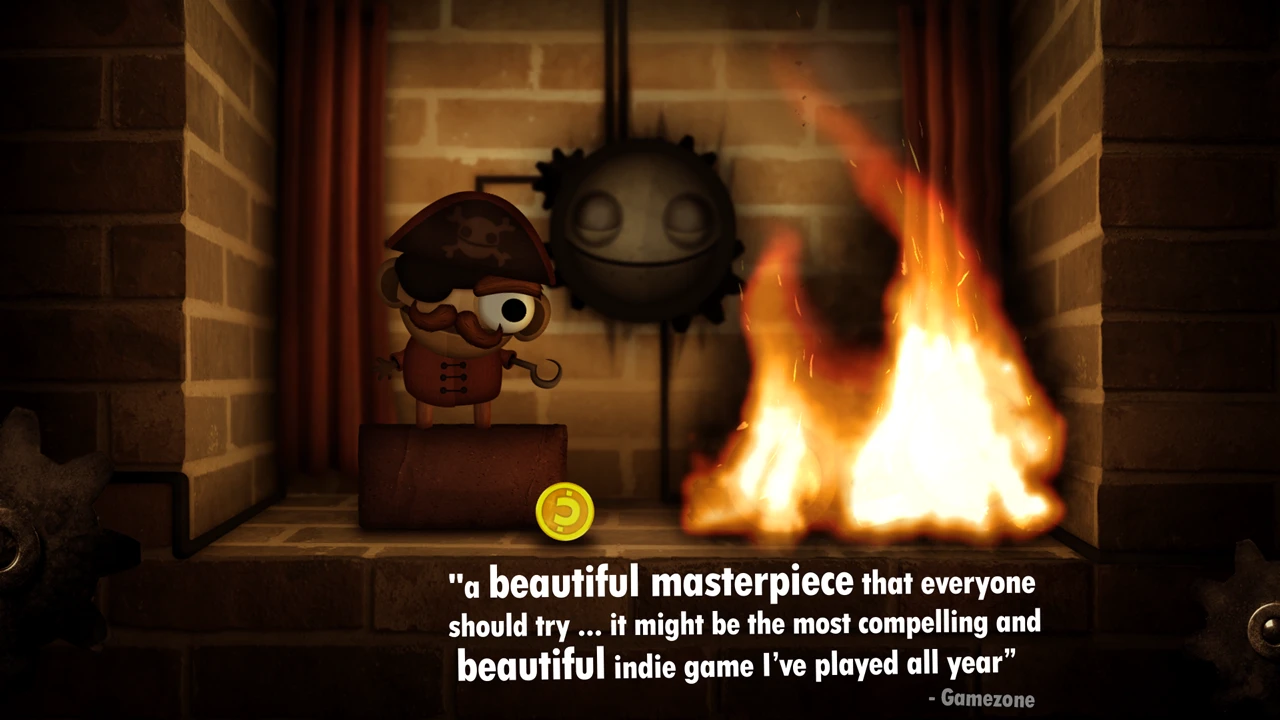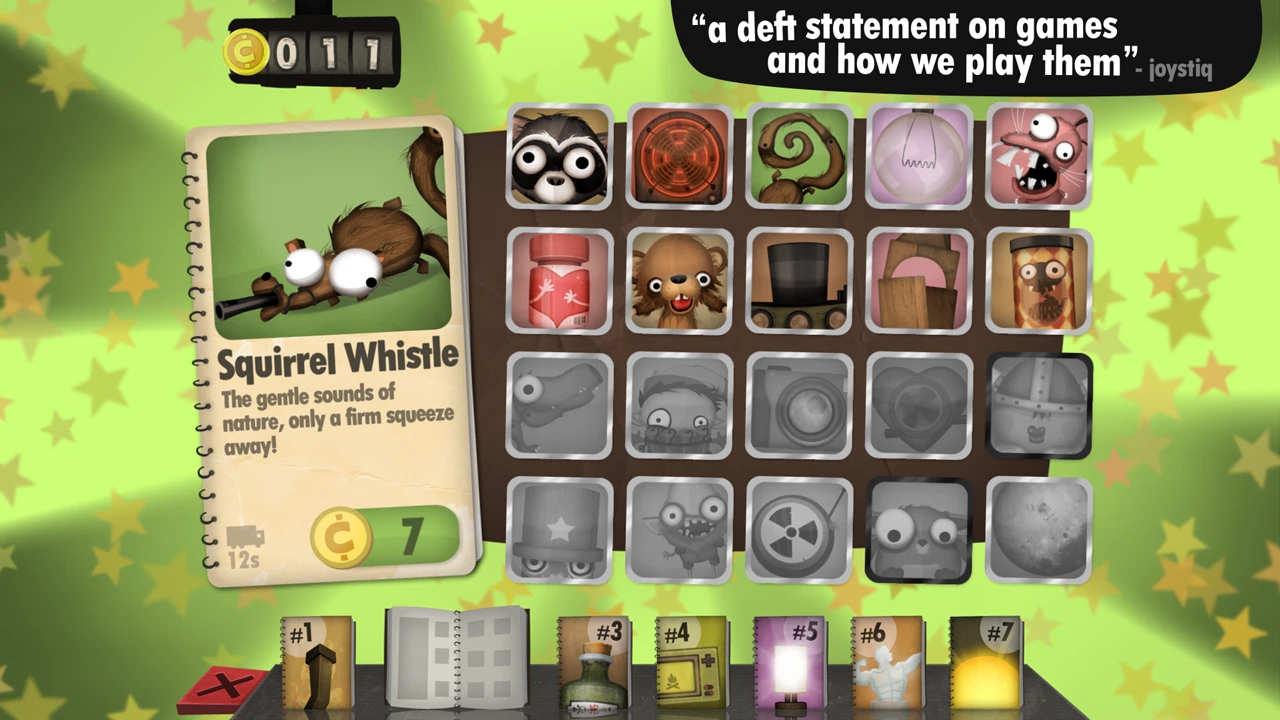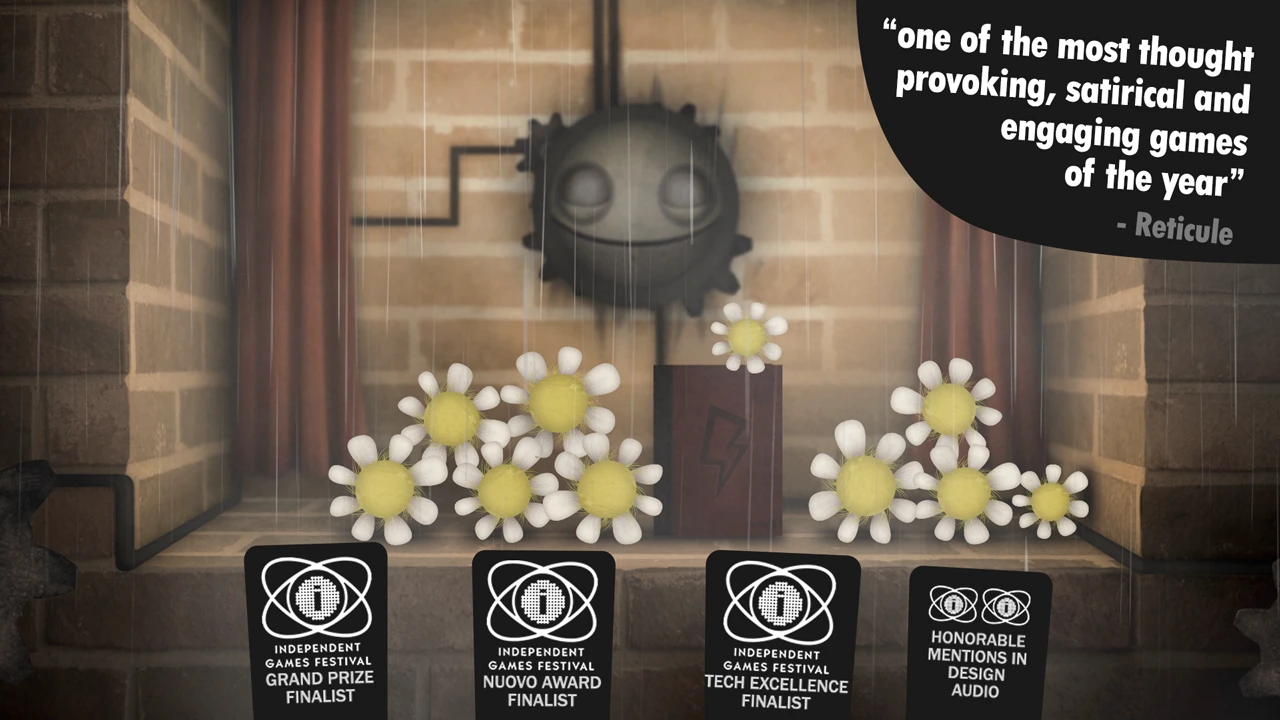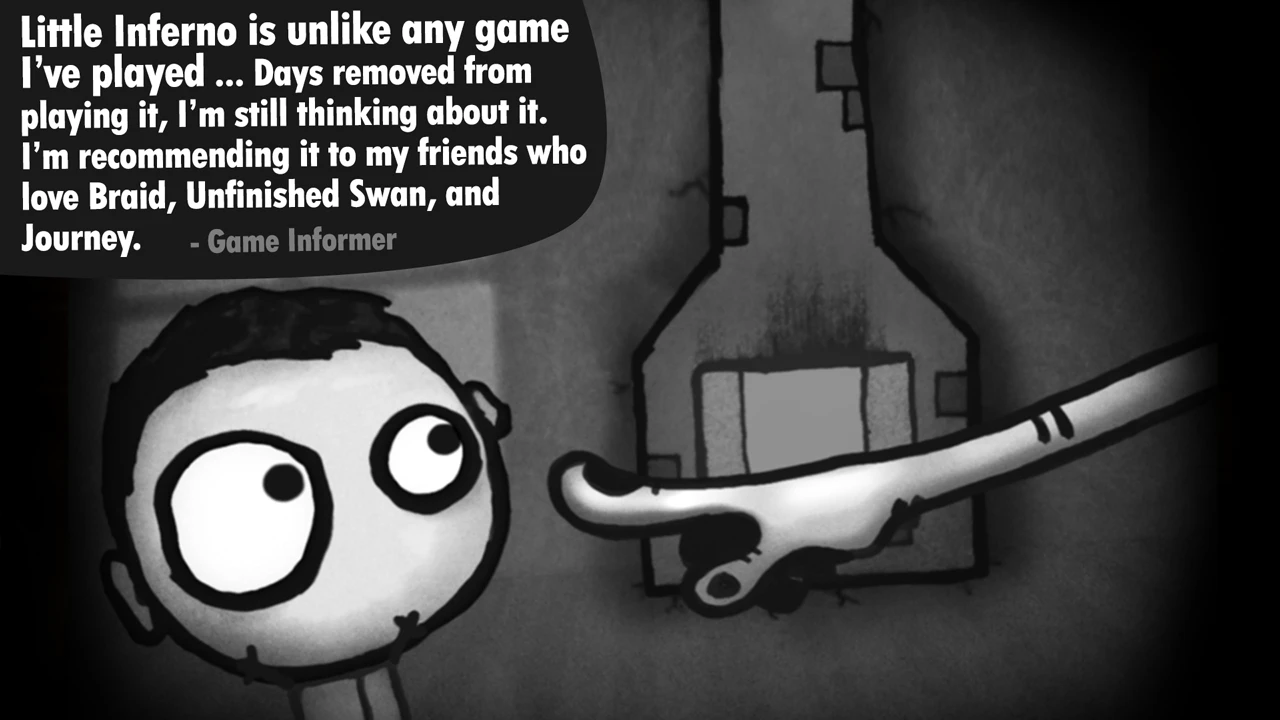 |
|
| Rating: 4.4 | Downloads: 100,000+ |
| Category: Casual | Offer by: Tomorrow Corporation |
The Little Inferno game immerses players in a puzzle-filled world where the goal is to guide a small, resilient creature known as a “Pix” through hazardous rooms filled with flames and obstacles. This puzzle platformer belongs to the indie adventure genre, characterized by its minimalist art style and physics-based challenges. It captivates players with its deceptively simple mechanics and deeply atmospheric storytelling, offering a unique blend of challenge and emotional resonance within its compact world.
The core experience of Little Inferno revolves around carefully navigating the Pix through inferno-themed rooms, avoiding deadly flames and using the environment to reach exit portals. Its visual style is intentionally stark, often described as minimalist, relying on stark contrasts between black and white (or similar palettes) and subtle animations. This simplicity, combined with a compelling narrative woven throughout the gameplay, creates an intensely focused and often thought-provoking experience.
Gameplay and Features
- [Core Gameplay Loop]: The main objective involves guiding a single “Pix” through rooms filled with fire. Players tap or swipe to control the Pix, manipulating physics and carefully timing jumps to avoid the intense heat and reach the exit portal. The goal is simple, but the challenges increase as players encounter more complex room layouts and mechanics.
- [Visuals or Art Style]: Little Inferno is renowned for its stark, high-contrast black-and-white (or analogous limited-color) graphics. The minimalist design focuses purely on form, light, and shadow, often accompanied by subtle, expressive animations that convey the Pix’s emotions. This artistic approach complements the game’s tense atmosphere and adds to its visual appeal.
- [Modes or Levels]: Primarily a linear single-player campaign offering around 5-6 unique rooms. Its structure provides minimal replay value beyond completion, focusing instead on narrative and puzzle satisfaction over extended play. The story-driven progression is the main focus.
- [Controls or Interface]: Control is typically handled via touch gestures on mobile or mouse clicks/taps on PC/Steam. Players use these to tap or drag the Pix, controlling its movement and interaction. The interface is deliberately minimalist, ensuring players focus solely on the game world and the immediate challenge.
- [Customization or Power-ups]: There are no traditional power-ups or extensive customization options in Little Inferno’s core experience. Progression is linear and driven by overcoming each room’s unique challenges.
- [Any Special Systems]: While not featuring complex co-op or boss systems, the game utilizes physics-based platforming and environmental interaction as its defining feature, creating unique puzzles in each room.
How to Play
Beginner’s Guide:
- Step 1: Launch the game and begin the initial tutorial sequence, learning how to tap/drag the Pix to move it around the small, introductory room.
- Step 2: Navigate through the first series of simple rooms, practicing basic movement, timing jumps over gaps or minor obstacles, and learning to interact with the environment.
- Step 3: Continue guiding the Pix room by room, facing increasingly complex challenges involving fire physics, moving platforms, switches, and other environmental puzzles until reaching the final exit screen.
Pro Tips:
- Maintain control precision – Especially on mobile, steady taps and controlled swipes ensure the Pix lands correctly, which is crucial for navigating narrow platforms and avoiding deadly fire.
- Master jump height timing – Learn to judge jump strength carefully, as over-jumping or under-jumping often prevents reaching platforms or falling into fire.
- Observe and interact carefully – Each room contains specific environmental elements (switches, levers, platforms) that must be used in the correct sequence to solve the puzzle.
Similar Games
| Game Title | Why It’s Similar |
|---|---|
| Inside |
Shares a similar puzzle platformer genre and minimalist black and white visual style. Both games feature atmospheric exploration and a strong narrative woven through the gameplay. |
| The Talos Principle |
Appeals to players who enjoy thought experiments within puzzle mechanics. It features a linear puzzle progression and a heavy focus on narrative delivered through environmental storytelling. |
| Braid |
A critically acclaimed indie title known for its time-manipulation mechanic and beautiful minimalist art style. Like Little Inferno, it offers a unique core mechanic set within a compact, story-driven puzzle experience. |
| Limbo |
Another award-winning puzzle game with a stark visual aesthetic and dark, atmospheric storytelling. Its gameplay, while different, shares the focus on precise environmental interaction and puzzle-solving. |
| Fe |
Popular for its physics-based room escape mechanics and adorable protagonist, it has comparable puzzle complexity and minimalist charm. |
Frequently Asked Questions
Q: What is the core mechanic of Little Inferno?
A: The core mechanic involves precise control of a “Pix,” guiding it through rooms filled with fire using taps and swipes on mobile or clicks on PC. Timing jumps and manipulating physics are key to avoid the heat and reach portals.
Q: Is Little Inferno challenging?
A: Yes, Little Inferno is intentionally difficult, relying on precise control, physics-based obstacles, and sometimes complex environmental puzzles. Mastery often requires practice, patience, and a careful eye for detail.
Q: How long does the Little Inferno campaign take?
A: The single-player campaign typically takes around 30 to 60 minutes to complete, depending on your skill level and how quickly you grasp the puzzle solutions.
Q: Can you play Little Inferno with a friend?
A: No, Little Inferno is primarily a single-player experience designed for solitary play through the linear campaign.
Q: Is the story told through dialogue or environmental cues?
A: Little Inferno relies heavily on a minimalist approach, using environmental storytelling through objects, lighting, silhouettes, and the player’s emotional connection to the Pix rather than extensive text or spoken narrative.
Screenshots
 |
 |
 |
 |
